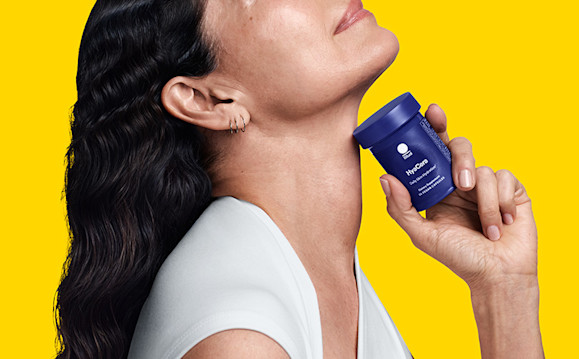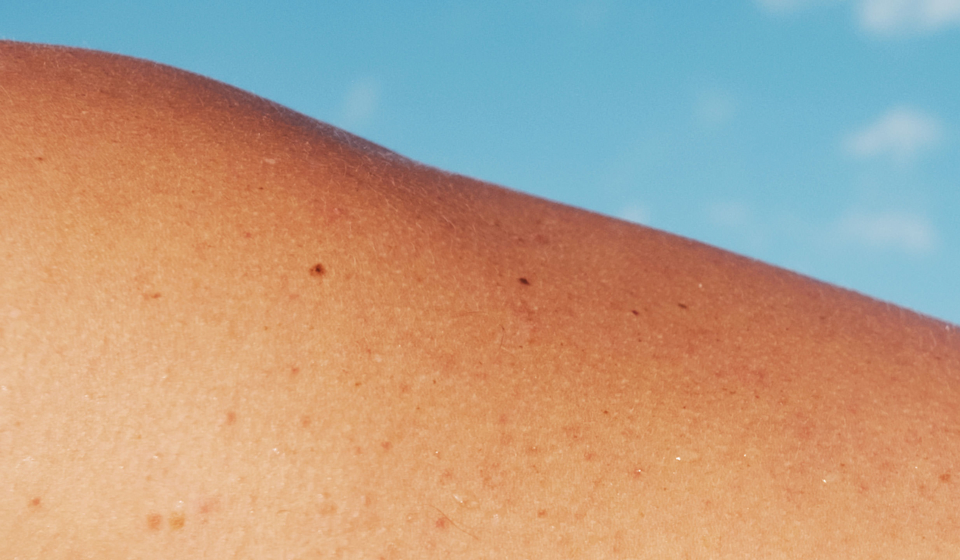Physical sunscreen, meanwhile, acts as an actual physical barrier on the skin: Most physical formulas (which also go by the name of “mineral SPF”) utilize ingredients like zinc oxide to deflect the rays. (1)
The pros and cons of these two types have been debated among the scientific community for some time. For starters, physical SPF starts working right away—but since it sits on top of skin, it might require more frequent application (or leave a slight white cast on skin). While chemical SPFs are typically made to be more wearable, many experts caution that due to the highly absorptive nature of chemical SPF, you have to be all the more wary of the ingredients in your preferred formula. In a recent study published in the Journal of the American Medical Association, scientists found heightened levels of four chemical sunscreen ingredients in the bloodstream after just one day of use. All in all, the concentrations found in the circulatory system were high enough to prompt more safety studies. (2)
What to Look For On A Sunscreen Label:
You know by now that not all SPFs are created equal. But what should you specifically look for on your sunscreen label? While any kind of sun protection is a good start, we tend to prefer physical or mineral sunscreens, since current research may point to less safety and environmental concerns. “We would generally be more in favor of mineral actives as they already carry GRASE (Generally Recognized As Safe and Effective) status,” notes Kevin Ewell, Ritual’s VP of Product Innovation. “This allows for a high level of confidence in showing it both works and is safe. None of the chemical sunscreens, on the other hand, have this status.” (3)
- The SPF range is between 40 and 60. Make no mistake: For optimal protection, you want to aim for a high number. But there’s also little data to suggest that anything above SPF 60 offers additional protection—in fact, the FDA is proposing an on-label cap of 60+. (3)
- The SPF is labeled “broad-spectrum.” There are three types of UV rays: UVA, UVB, and UVC. When it comes to sun protection, we typically care more about UVA and UVB rays, since UVC rays emitted by the sun are ultimately absorbed by the ozone layer of the atmosphere. But that’s also why it’s important to select an SPF that’s explicitly labeled as “broad-spectrum:” This means it protects against both UVA and UVB rays.
- It’s water-resistant. Whether you’re lathering up for a day at the beach or heading outside for a run, the point is that you want your SPF to last as long as possible—and that means opting for a water-resistant formula. (Reapplication is still important, though—aim to add another layer every couple of hours, especially if you’re engaging in a lot of activity.)
- Look for zinc oxide or titanium dioxide on the label. We recommend these two mineral active ingredients in particular, which are the only two found in mineral (or physical) formulas: In addition to providing ample physical protection against UVA and UVB rays, they’re also widely recognized as safe ingredients. (4)
Essential Reading: If you're traveling to the beach here are 6 Travel Essentials for a Smoother Getaway.
Good For You, Good For the Environment
Get you an SPF that can do both. That means taking all of the sun safety factors above into consideration, along with the fact that some ingredients are worse for the planet than others. Two worth specifically calling out are octinoxate and oxybenzone, which are often the active ingredients in chemical SPF. But recent studies have linked both of these chemicals to a detrimental effect on coral reefs—and since reefs are believed to have the highest biodiversity of any ecosystem on the planet, the domino effect of injured or damaged reefs can be incredibly costly from an ecological POV. (5)
It’s something that’s such a deep concern, that Hawaii has actually passed legislation to ban sunscreens that contain octinoxate and oxybenzone. The bottom line? While you’re making the effort to protect yourself, take steps to protect the planet while you’re at it.












